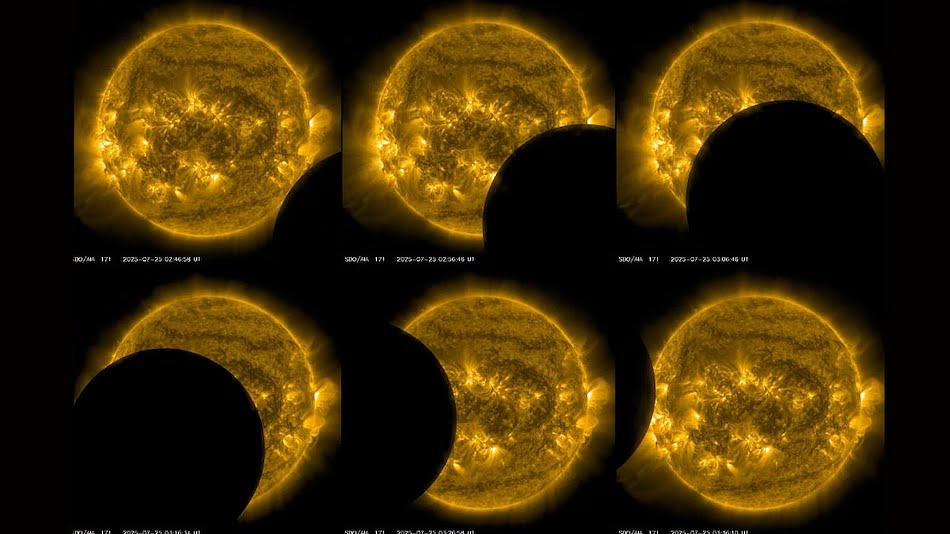
In an extraordinary astronomical event, NASA’s Solar Dynamics Observatory (SDO) recorded two solar eclipses on the same day, July 25, marking a rare cosmic occurrence. The spacecraft, which has been monitoring solar activity since its launch in 2010, captured both events just hours apart from its geosynchronous orbit.
First the Moon, Then the Earth
According to a statement from NASA, the first eclipse occurred at 8:45 AM Bangladesh time, when the Moon passed directly between the SDO and the Sun, partially obscuring the solar disk. A few hours later, starting at 12:30 PM, the Earth itself moved into position between the observatory and the Sun. By around 2:00 PM, the Sun had completely disappeared from the satellite’s view, marking the second eclipse of the day.
A Rare Double Eclipse
While solar eclipses are not uncommon, witnessing two separate eclipses—caused by different celestial bodies—on the same day is a rare event. What makes this even more remarkable is that both were captured from space by a single observatory in Earth’s orbit.
The SDO, positioned in a geosynchronous orbit, enjoys an almost continuous view of the Sun. This strategic vantage point allows it to monitor solar flares, magnetic activity, and other dynamic solar phenomena. On July 25, it provided a front-row seat to a double eclipse spectacle that could not have been witnessed from Earth.
Why It Matters
Events like this not only provide breathtaking visuals but also offer valuable scientific data. Observing the Sun’s behavior during such eclipses helps researchers better understand solar dynamics and refine their models of solar radiation, which in turn can improve space weather forecasting.
As NASA continues its exploration of the Sun, moments like the double eclipse of July 25 serve as reminders of the fascinating and ever-changing nature of our solar system.
